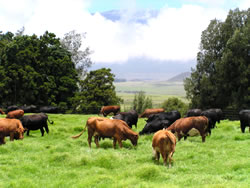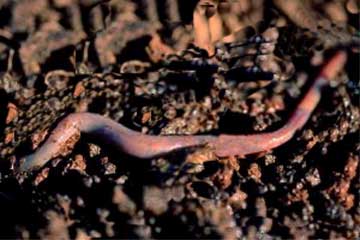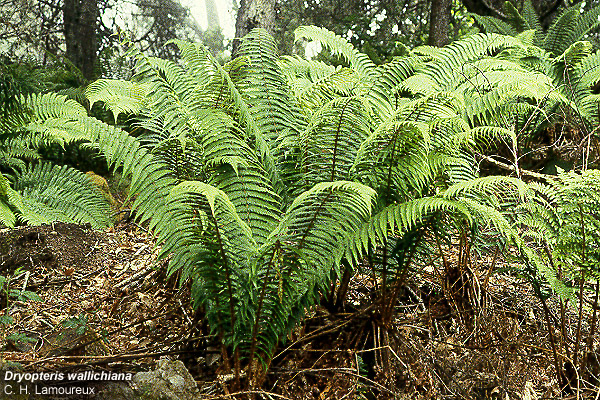
|
|||||
Soil Formation
In the previous section, we discussed how soil profiles vary from place to place. In fact, differences in soil make-up cause soils to behave and perform in many different ways. We have mentioned the process of weathering when we discussed soil mineral composition. Now, we will discuss the processes of weathering in terms of soil formation. We will begin by looking at the 5 factors of soil formation that cause great differences in the development of soil profiles on Maui. The 5 factors of soil formation are: For a more detailed presentation of soil formation, click on the United States Department of Agriculture link below. This website contains definitions of the extensive classification system that is used to describe soils: Parent MaterialParent material affects soil fertility in many ways. First, the type of parent material determines which minerals (link to mineralogy) will predominate in the soil. Secondly, as parent material weathers, nutrients are released into soil solution, which subsequently can be taken up by plants and other organisms or leached from the soil. Parent material is the starting point for most soil development. The parent material may be mineral rock and/or organic matter. When parent rock material is exposed to the atmosphere or when organic matter and/or minerals are deposited on the earth’s surface, soil formation begins. The type of parent material and how the soil is formed will greatly influence the properties of the soil. There are two general rules that we may state about the influence of parent material on soil formation:
Type of parent materialParent RockThere are various types of parent rock material. The major two types of rocks on Earth are granite and basalt. While granite is prevalent on most of the continental United States, the primary parent rock material on Maui is basalt (Table 2). On Maui, basalt rock formed from the slow-moving lava flows of the East and West Maui shield volcanoes. Basalt rock is finely textured and comprised of small crystals which cooled rapidly along the surface of the earth. As a result, the soils which were weathered from basalt tend to be finely textured, as well as fertile when not highly weathered. In contrast to basalt, granite is coarse-textured rock that generally weathers into coarsely-textured soils. Granite is the parent material of most soils in the continental United States.
Figure 10. Cliffs on Maui which consist of basalt rock columns.
Volcanic ashDuring the eruptions of Maui’s volcanoes, volcanic ash and other ejected materials, were deposited upon the volcanic slopes and adjacent areas. Volcanic ash has a non-crystalline, or amorphous, structure due to its rapid cooling. The soils that developed from volcanic ash contain mostly amorphous materials and minerals, such as allophane, imogolite, and ferrihydride. For more information about volcanic ash, click on the following two links:
CoralCoral is a carbonaceous material that develops along coastal areas. In nutrient management, coral can serve as a valuable source of liming material to raise soil pH. To learn more about coral reefs, click on the following three links:
Organic MatterIn uplands of Maui, some soils have formed from the deposition and accumulation of plant residues, and other organic materials. Often these soils are called peat or muck. In Maui, organic soils are not widely used in agriculture. Organic soils of the world can be very important and productive agricultural soils. If you are interested in organic soils and would like to find out more, visit the websites listed below:
Type of FormationResidual parent materialThe soil develops in situ, or in place, as the parent material weathers. This is often the source of soil along mountain ridges. In the tropics, the soil formed tends to be highly leached and oxidic. Colluvial parent materialThe soil develops from rock fragments that fall from greater heights due to gravity. These soils tend to be coarse and stony. This mode of formation dominates along mountain slopes. Alluvial parent materialThe soil develops along a stream or river systems in floodplains, alluvial plains, or delta deposits. Soils have a great degree of particle sorting, as finer particles are kept in suspension by flowing water. Alluvial soils are common on Maui. Loess depositsThe soil develops from deposits of particles by the wind. Particles are highly sorted because wind carries finer particles the furthest. Since volcanic ash is carried and deposited by wind, this method of formation is particularly important for volcanic ash soils. Categories of Parent Rock Material There are three categories of parent rock material. The first category is igneous rock. Igneous rock is cooled molten lava that originated from within the earth. There are two types of igneous rock: intrusive and extrusive igneous rock. Intrusive rocks are large crystals that have slowly cooled within the crust of the earth. An example is granite, which is used as a common building material. While this type of parent rock is common on the continental United States, it is not common in Hawaii. Instead, the most common parent rock material in Hawaii is extrusive igneous rock, which is often associated with volcanic activity. It is comprised of small crystals that cooled rapidly on the earth’s surface. An example of extrusive igneous rock is basalt. Now, let’s consider the two general rules of soil formation that were stated early. Since extrusive rock materials, such as basalt, are finely textured, the soils weathered from this parent rock tend to be finely-textured. And so, this is a reason why much of Hawaii soils are finely-textured. The next category of rock material is sedimentary rock. After long periods of compression, weathered products from older rocks will become cemented. As a result, another type of rock forms. Examples of this type are sandstone, shale, and limestone. The final category of parent rock is metamorphic rock. Metamorphic rocks have formed as the result of extreme heat or pressure. As a result, a change in the form of igneous or sedimentary rock occurs. For example, under extreme heat or pressure, igneous rocks will form schist gneiss, limestone will form marble, and shale will form slate. Climate
PrecipitationRainfall greatly influences soil formation because the rainfall intensity and distribution greatly influences the extent of soil weathering. For instance, soils that are in a predominantly moist environment tend to be highly weathered. The occurrence of leaching, or the movement of minerals through the soil profile with water, increases as the amount of moisture increases. In the tropics, rainfall is a fundamental force that weathers many soils. TemperatureTemperature also has a profound effect on weathering. Warm temperatures, coupled with high moisture, will increase weathering processes. Therefore, in the warm, wet climates of the tropics, it is typical to have well-developed, highly weathered soils. BiotaBiota is the vegetation that covers the soil, the animals that live upon the soil, and the soil microorganisms that inhabit the soil. Soils that develop in grasslands will be remarkably different than soils that develop in forests. This soil formation factor is intimately influenced by climate and changes over time.
Figure 13. Earthworms casting. Earthworms are very active participants in soil formation, through their casting and composting activities. Figure 14.‘I’o Nui, an indigenous plant to East Maui. Plant debris is important in soil formation. Not only may soils be formed from plant debris, decomposing plant material release nutrients into the soil. TimeWith time, the soil undergoes many changes. Soil formation has a very long history that spans from thousands to millions of years. Since the Hawaiian Island chain is formed by volcanic, or hot spot, activity as the Pacific Plate moves to the northwest, the age of each major volcano in the islands is different. In fact, West Maui volcano is approximately 1.2 to 1.6 million years old, whereas Haleakala is between 410,000 and 860,000 years old (for further information visit the following website: http://www.soest.hawaii.edu/GG/ASK/hawaii_volcano_age.html ). The soil profile is continually changing and developing with time. In the beginning, pioneer species, such as mosses and lichens, colonize rocks and secrete acids that weather the rocks. Microorganisms, such as bacteria and fungi, are instrumental in forming soil through the decomposing organic matter and binding of soil particles. Earthworms create channels, as well as secrete substrates that bind soil particles together. Animals, as well as humans, directly and indirectly transform the soil through their many activities, in both positive and negative ways. Additionally, with time, the climate promotes changes along the earth surface and profile development.TopographyTopography is the lay of the land. It describes the relative steepness of a slope or the flatness of a plane. It may also describe the orientation of the land with respect to the direction of the sun, or it may describe depressions and elevations of the land. Topography has a direct impact on water drainage. We may observe the effect of topography by describing a typical mountain slope. Residual soils that form along the uplands tend to experience good drainage. The colluvium soils that form along steep slopes will usually have excessive drainage. Finally, alluvial soils that form in the flood plains have poorer drainage. To view an animation from North Carolina State University which demonstrates how topography influences soil formation, click on the following link: |
|
 Soil fertility is greatly influenced by the factors of soil formation. As soils form, nutrients are being continually removed from and added to the soil with time. The conditions that are present during soil formation ultimately determine how much and what kind of nutrients the soil can naturally supply and hold.
Soil fertility is greatly influenced by the factors of soil formation. As soils form, nutrients are being continually removed from and added to the soil with time. The conditions that are present during soil formation ultimately determine how much and what kind of nutrients the soil can naturally supply and hold.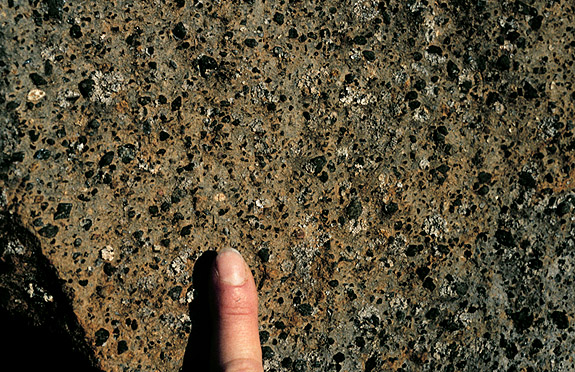
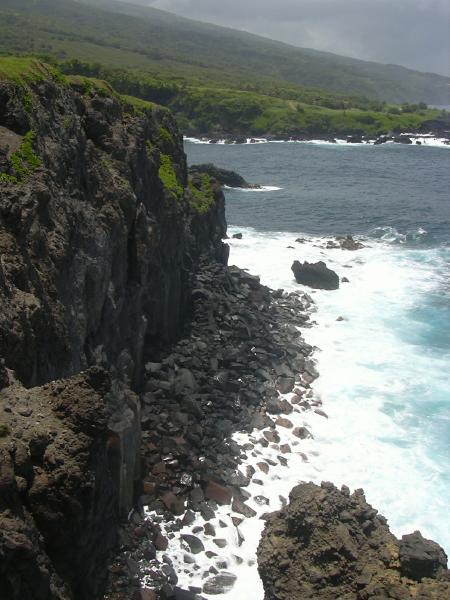
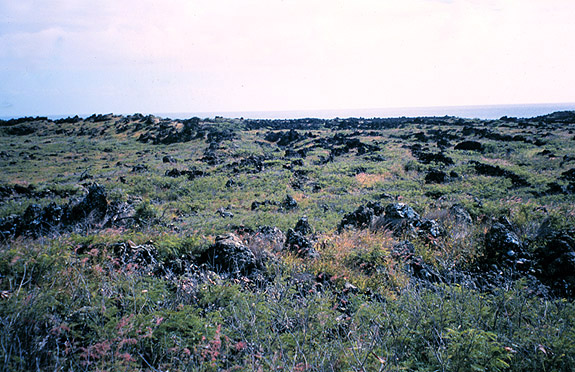
 The effect of climate on soil formation cannot be underestimated. Climate is a fundamental force of weathering that interacts with all other soil formation factors. The primary forces of climate are precipitation and temperature. While nutrients can be released from primary minerals during weathering, high levels of precipitation and temperature can remove, or leach, nutrients from the soil and reduce its fertility.
The effect of climate on soil formation cannot be underestimated. Climate is a fundamental force of weathering that interacts with all other soil formation factors. The primary forces of climate are precipitation and temperature. While nutrients can be released from primary minerals during weathering, high levels of precipitation and temperature can remove, or leach, nutrients from the soil and reduce its fertility.